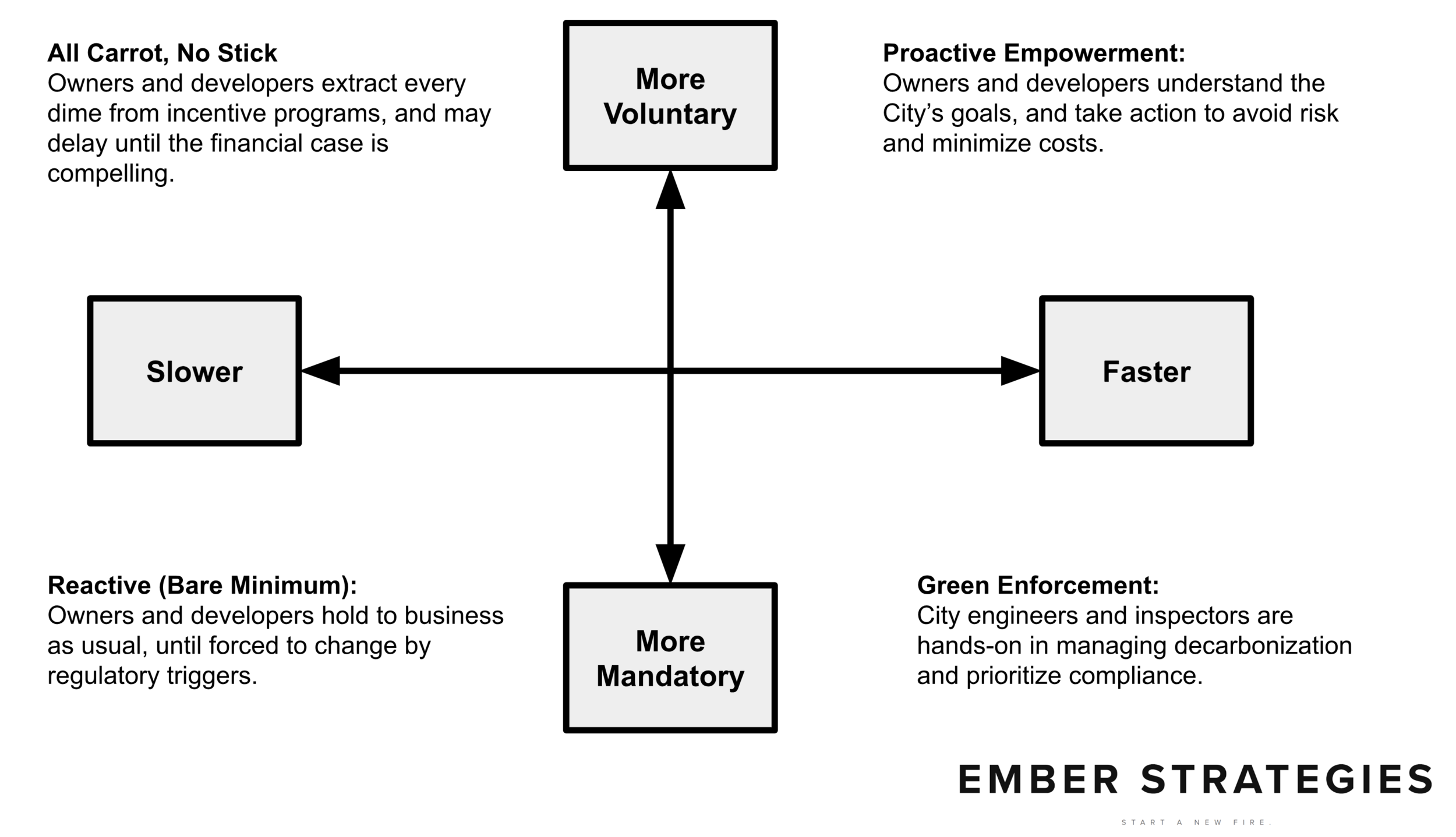Cities are committed to 80% (or even 100%) by 2050 carbon reduction goals. The energy use of the city’s existing building stock stands in the way of reaching that goal, and those buildings are not going anywhere.
For regulators, the first instinct is to regulate. The trend towards cities mandating efficiency improvements and setting energy use or energy intensity limits in buildings is about to commence, led by New York City.
No one says it will be easy, but the technical and administrative requirements of regulating each individual big building are not well understood. It is difficult to understate how complicated big buildings can be, and the engineers, architects and energy professionals we need to help us know what to do and when to do it are extremely hard to find. Putting all our eggs in the “mandatory efficiency” basket it risky, to be sure.
In 2017, the Energy Foundation funded Ember Strategies to develop another way for cities to move their existing buildings forward. The “Empowerment Method” was the result, a policy development framework that helps cities identify when, where, and how to make targeted interventions in their local commercial real estate markets to empower owners to do what needs to be done. The Empowerment Method combines the real estate industry’s existing tools and processes with local market fundamentals and a bit of behavior science to identify tweaks to existing policies and opportunities for new high-impact policies that will move the carbon needle.
In 2018, the San Francisco Department of the Environment began work with Ember Strategies on implementing the Empowerment Method in their pursuit of 100% carbon reduction by 2050.
The Empowerment Method is based on a few simple fundamentals:
Cities and the owners of buildings have a shared interest in better buildings - ultimately, owning a building is owning a share in the city’s future prosperity.
The business of real estate is about managing risk and change - the question is which risks to mitigate and what changes to make, and the bottom line is the bottom line.
2050 is a long way away and every building owner knows that equipment will break and buildings will need to be refreshed, re-positioned, renovated. It is not IF, but WHEN.
We have three decades between now and 2050, let’s take advantage of them. There will only be one, maybe two opportunities to substantially re-engineer big buildings; we cannot afford to miss them. That means making the right changes at the right times, in the right order.
Owners can fix it when it breaks or repair and pass the buck on to the next owner, or they can make the smart investments that increase net operating income at opportune times. Modernized buildings can command top rent and market leading valuations, fixer-uppers will get discounted. Same as it ever was.
To make this happen, cities must change their mindsets - become the building owners’ advocates, not just their regulators. A little bit of empathy (behavior science if you’re fancy) goes a long way. Help them avoid missing the opportunities where it makes financial sense to make the investments that lower carbon emissions. Better yet, help them have a plan, since no one likes surprise investments.
It will take more than mandates to reach 80x50 - we need the real estate industry to do what they do best to get there - manage risk, respond to economic drivers, find value and innovate.
